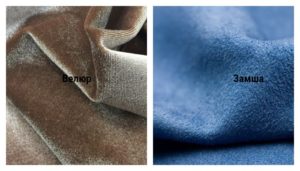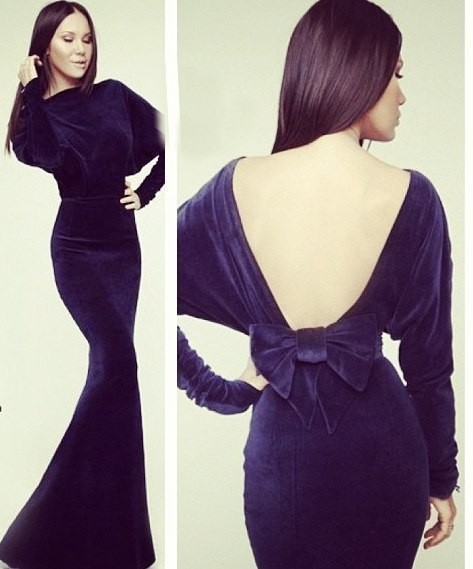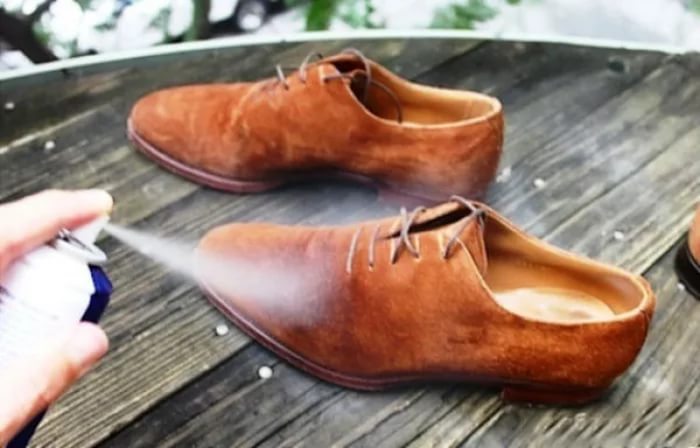Lovers of expensive and luxurious shoes are sure to have at least one pair of velor in their wardrobe. This is a truly exquisite and luxurious material from which different types of shoes are made. They combine excellent appearance and good performance characteristics, and are perfectly combined with most classic wardrobe items.
What is velor for shoes?
 The material is a natural skin of domestic small cattle or pigs, which is tanned in a special way, giving it elasticity and strength. He is very It is similar to suede, but has one significant difference: its inner side is covered with short, hard fibers, and the second is completely smooth, unlike both fleecy suedes.
The material is a natural skin of domestic small cattle or pigs, which is tanned in a special way, giving it elasticity and strength. He is very It is similar to suede, but has one significant difference: its inner side is covered with short, hard fibers, and the second is completely smooth, unlike both fleecy suedes.
It is possible to obtain such material by using grinding and tanning. The leather is kept in special substances to give it elasticity and strength.The front side is then carefully sanded so that it is smooth and beautiful.
Important! Such shoes have a lower cost in contrast to boots made of natural suede. This is due to the low wear resistance of the shoes.
In addition to the production of boots and shoes, velor is also used for the production of hats, bags, and haberdashery goods. When making shoes from velor, it is treated with special impregnations that can increase the service life of the product..
Definition and characteristics
 According to the data available in dictionaries, velor is a leather material that is obtained by tanning the skins of small cattle and pigs. Often, for the production of products, skins with external defects are taken, because due to careful grinding, they can be disguised and successfully used in the production of clothing.
According to the data available in dictionaries, velor is a leather material that is obtained by tanning the skins of small cattle and pigs. Often, for the production of products, skins with external defects are taken, because due to careful grinding, they can be disguised and successfully used in the production of clothing.
There is also the concept of fur velor. This is a woven material produced by spinning. Often used to make clothing, including for small children. It has extraordinary softness and comfort.
The main characteristics of velor are:
- softness and comfort (the material is very pleasant to the body, attractive in appearance);
- good thermal insulation (achieved thanks to a dense and treated layer of leather and fluffy pile with good undercoat);
- strength (thanks to modern technologies and improved impregnations, it is possible to achieve good performance in operation);
- environmentally friendly (people with sensitive skin can safely purchase such shoes for themselves, they have good breathability and do not irritate the skin);
- practicality (shoes do not require special knowledge of care, they are quite easy to clean and, with proper care, retain their external qualities and properties for a long time).
Important! It is worth understanding that velor is still not a high-grade material and is noticeably different from natural suede. This is why velor shoes are more accessible and cheaper.
What types are there?
Varieties of material appeared thanks to processing methods:
 bakhtyrmyan (the outer side is fleecy and polished inner side);
bakhtyrmyan (the outer side is fleecy and polished inner side);- front (material with a polished front surface);
- split leather velor (leather material with the front layer removed and without artificial measure, which is used for sewing shoes and clothes);
- fur (dressed leather with short pile; products made from such material are called sheepskin).
Important! There are also woven varieties, but it is not practical to use them for shoe production.
What is natural velor made from?
As mentioned above, natural velor for making shoes is obtained by tanning animal skins. Most often, goat skin or raw materials obtained from calves are used for this. The skins of these animals are characterized by good resistance to external factors, especially if the manufacturing process is selected and carried out according to all the rules.
How to distinguish between natural and artificial velor?
Experts give several recommendations on how to distinguish real velor from artificial leather or suede. There are several basic rules for this:
 bend the material (with such manipulation, natural leather is bent in an arc, while artificial leather is broken);
bend the material (with such manipulation, natural leather is bent in an arc, while artificial leather is broken);- apply your hand (put your hand on the front surface and keep it pressed tightly for some time; if the fabric is artificial, the hand will become wet and a mark will remain);
- inspection of the cut (it can give a clear answer to the question about the naturalness of the material; imitation always has a fabric base);
- a drop of water (moisture is not absorbed into natural material, while a wet spot will remain on artificial material).
You can also easily distinguish velor from suede. To do this, you can simply run your finger over the material. The fibers of velor fabric will remain disturbed and will not return to their place, while suede will look perfect. In addition, velor fabric has a pile on only one side, while suede has a pile on both sides.


 bakhtyrmyan (the outer side is fleecy and polished inner side);
bakhtyrmyan (the outer side is fleecy and polished inner side); bend the material (with such manipulation, natural leather is bent in an arc, while artificial leather is broken);
bend the material (with such manipulation, natural leather is bent in an arc, while artificial leather is broken); 0
0





